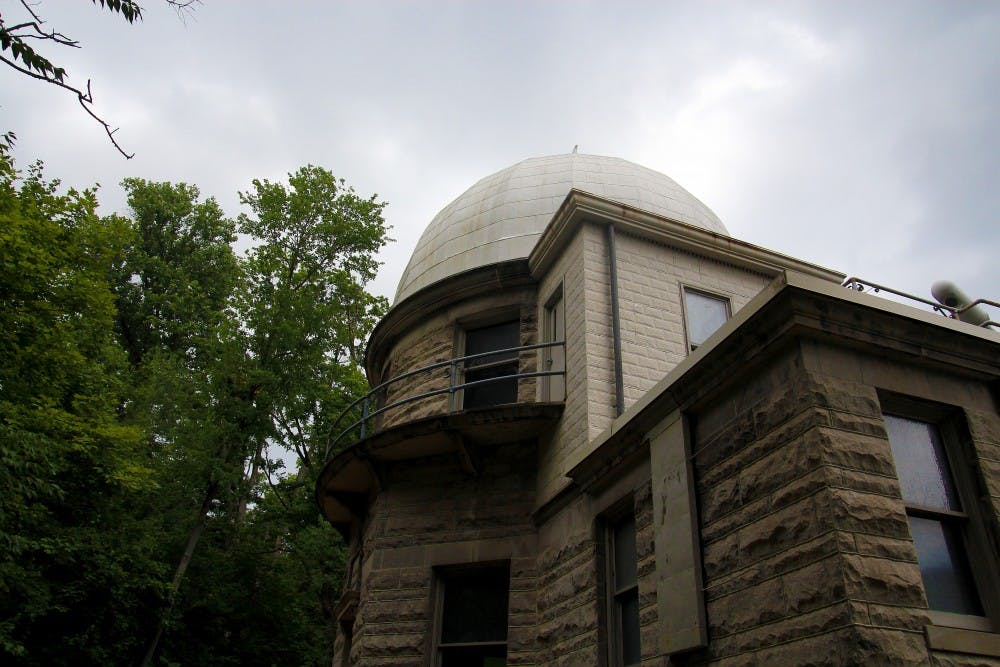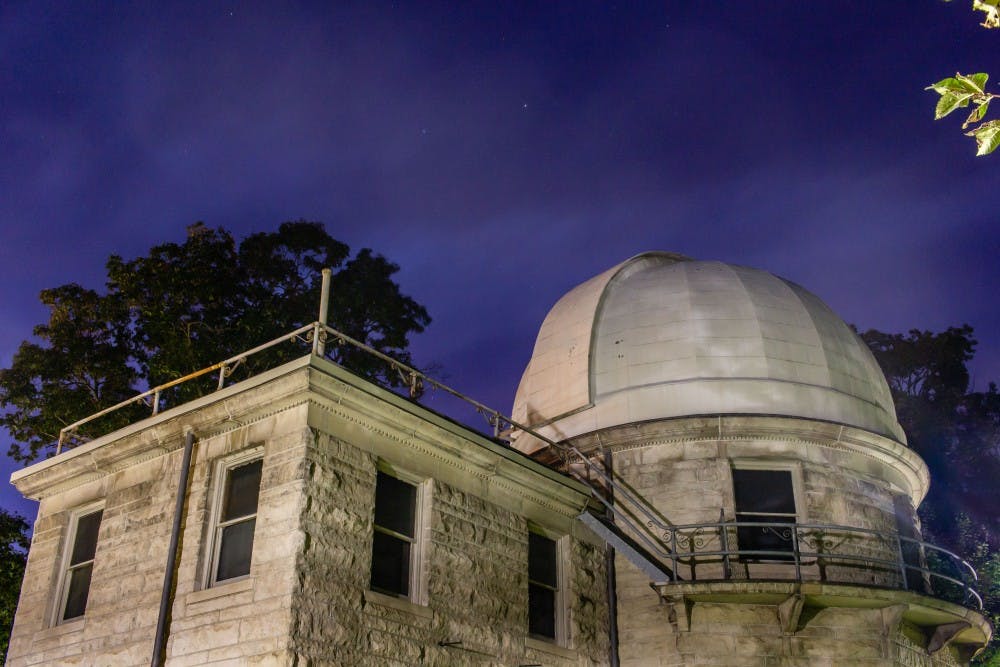It was a balmy Wednesday night by 10:30 p.m., and the Kirkwood Observatory was already bustling with visitors of all ages, eager to catch a glimpse of the heavens.
Built in 1900, the observatory is named after Daniel Kirkwood, an astronomer and IU professor of mathematics, who discovered the Kirkwood Gaps in the asteroid belt between Mars and Jupiter in 1866. Although the observatory is no longer used by the University for research, it is still used for instructional purposes, as well as outreach events.
Karna Desai, a former graduate student at the IU astronomy department, greeted visitors as they came through the front door.
“The observatory does a lot of outreach to the Bloomington community," Desai said. “We hold open houses every Wednesday night from spring break to Thanksgiving, an hour after sunset, if the weather is clear.”
Desai said the open house events mainly allow people to look at bright night sky objects, such as the moon, Jupiter, Saturn and some globular clusters and nebulae.
“Due to light pollution in the area, we can’t look at a lot of deep sky objects,” Desai said.
This open house was primarily focused on Jupiter.
“Venus has set by now,” Desai said. “Saturn is currently behind trees, it will be up in 30 minutes or so.”
The night time open houses aren’t the only events the Kirkwood Observatory offers.
“In the daytime, visitors are welcome to come in and look at the sun through our solar telescope,” Desai said. “It is a very different concept than looking at objects that are far, far away from us in the universe. The sun is too bright for our eyes, so we would want less light. Therefore, we use an entirely different type of telescope.”
The line of people waiting to use the observatory’s 12-inch refracting telescope to view Jupiter trickled from the observation room and wound down the narrow stairs.
Situated in the middle of the room, the telescope was directed towards a slit in the domed ceiling, through which the night sky was visible.
Madison Smith, a graduate student at the IU astronomy department, was operating the telescope to help observers get a clearer view.
Apart from Jupiter, Smith said, stargazers can also see the Summer Triangle, which is comprised of several different constellations with three very bright stars that gave it its name.
Smith also explained how the telescope works.
“It is a normal refractor with several lenses inside to direct the light to the eye piece,” Smith said. “It is one of the simplest types of telescopes.”
The number one problem that affects stargazing is cloud cover, according to Smith.
“Some people may think otherwise, but the reality is that you can’t see through clouds with a telescope,” Smith said. “There is also the problem of rain, we can’t have the dome open to look at the sky when it is raining.”
Smith said tonight was one of the observatory’s busier nights.
“We usually get between 50 to about 200 people on open house nights,” Smith said. “Some nights can get very busy, especially during the summer, when there are people visiting Bloomington.”
Smith said she particularly enjoys answering visitors’ questions.
“Some people come up and automatically ask about the telescope,” Smith said. “Other times, we teach simple astronomy facts and explain what’s being viewed.”
This story originally said the Kirkwood Observatory had a 12-inch retracting telescope. It is a 12-inch refracting telescope. The IDS regrets this error.





